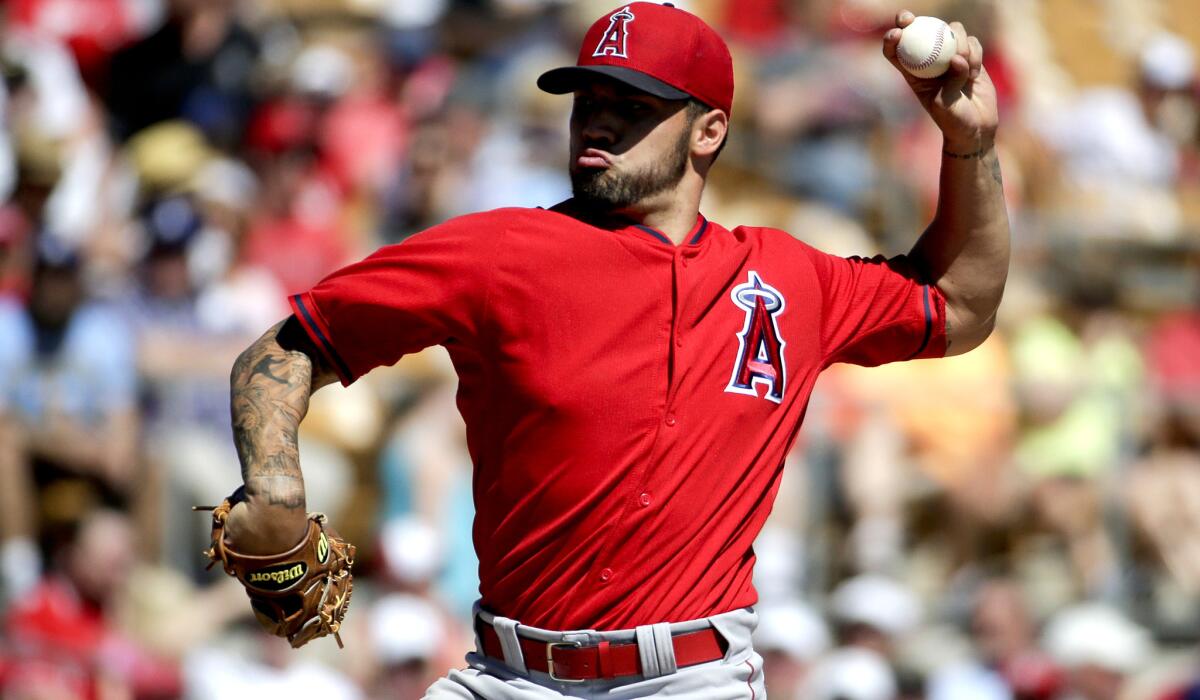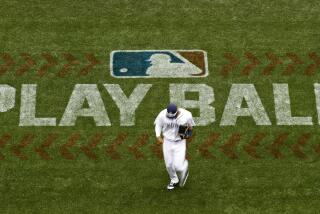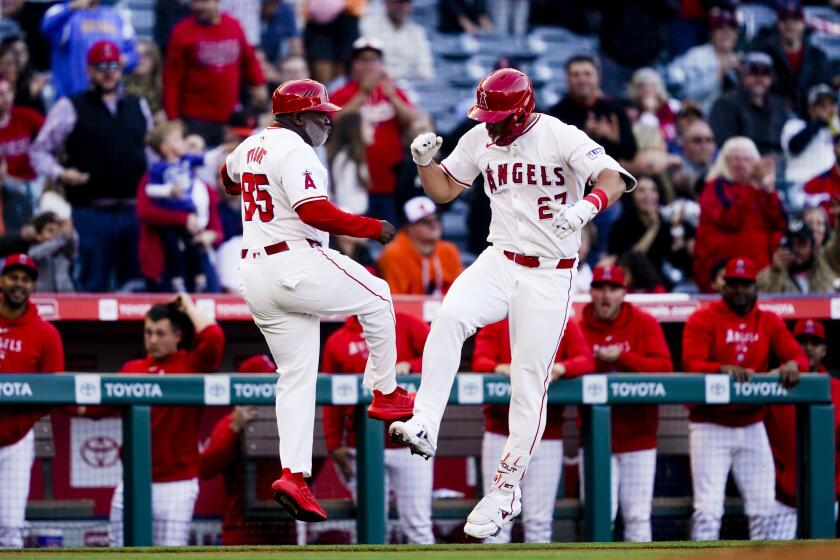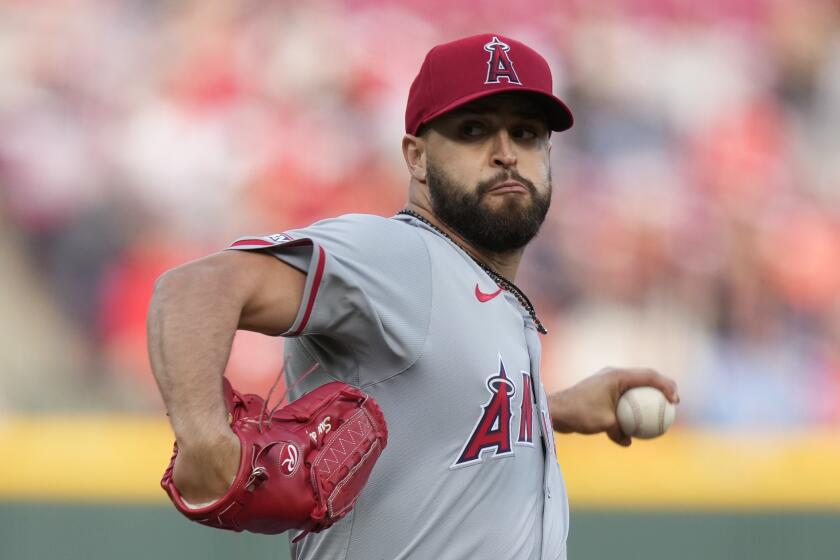MLB players are embracing pace-of-game initiatives

Angels starter Hector Santiago was a little late to the mound in the bottom of the first inning Friday, something that didn’t escape the notice of plate umpire Alan Porter.
But then how could it since a huge digital clock was staring back at him from atop the center-field wall, ticking down the 2 minutes 25 seconds teams are allotted between half-innings. So as the clock neared zero, the umpire stepped toward the mound, wagged a finger and quietly shortened Santiago’s warmups by one pitch.
America’s timeless pastime is now on the clock.
Last month Major League Baseball adopted a number of measures to speed up the game, among them requiring hitters to keep one foot in the batter’s box, cutting the time allowed for relievers to enter a game and timing the break between half-innings.
And midway through spring training the pace-of-game initiatives have not only shortened games, they’ve proved popular as well.
“The sense around here is things are going good,” Angels bench coach Dino Ebel said. “We haven’t heard one complaint.”
Clearly it was time for baseball to do something. The length of an average big league game has grown by a half-hour, to 3 hours 3 minutes, since 1981. And much of that increase had little to do with what was happening on the field.
Dodgers Manager Don Mattingly said he looked at some of his team’s games from last season and found it wasn’t unusual for teams to take 3 1/2 minutes to change sides each half-inning. Limiting that to 2:25 would shorten an average game by more than 18 minutes.
“I don’t think there’s been any negatives to it,” he said. “Our games have been quicker but without changing the rhythm. It’s really just a matter of getting guys on the field and getting off.”
College baseball initiated similar changes four years ago, limiting the break between innings to 90 seconds and the break between pitches to 20 seconds. And the results were immediate: in the first 10 days of the season one-third of Division I games finished in less than 2 hours 30 minutes and just 25% lasted longer than three hours.
The change has been less dramatic on the big league level. But the quick buy-in by players and coaches has been encouraging, Commissioner Rob Manfred said.
“In general, players are positive,” he said. “Our players are very cognizant of the need of this sport to be responsive to fan concerns on topics such as this. I also think the players appreciate the fact that we precede very cautiously.”
The real test will come with the start of the regular season. During spring training rules violators have been given nothing more than a gentle reminder. But beginning in May, players will receive a warning while “flagrant violators” can be fined up to $500.
Additionally, the between-innings time limit for nationally televised games will grow to 2 minutes 45 seconds. That has some players wondering just how committed to commissioner’s office is to speeding up games.
“TV’s the thing that slows the game down,” Angels pitcher Jered Weaver said. “When the teams are ready to go to work and you’ve got to wait another 45 seconds for TV to come in, that’s when the pace of play comes into play.”
More to Read
Go beyond the scoreboard
Get the latest on L.A.'s teams in the daily Sports Report newsletter.
You may occasionally receive promotional content from the Los Angeles Times.







